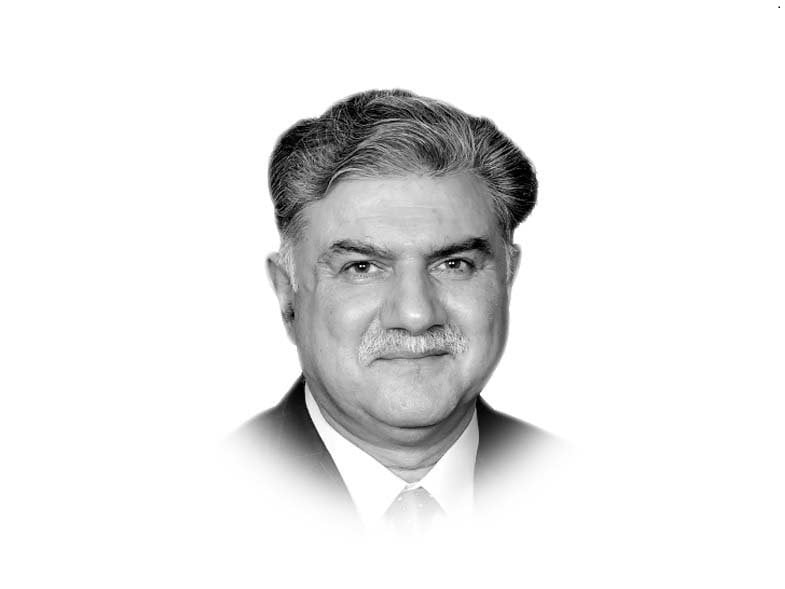Afghan people, Afghan govt and the Taliban — a necessary distinction
It is fashionable these days to lump every shortcoming that Pakistan faces at the doorstep of Afghanistan. Be it the inflation, the rising crime, the ever present terrorism, the congestion in our urban places like Peshawar, the proliferation of drugs or the ubiquity of Kalashnikov… Afghanistan and Afghan refugees are to blame. Most analysts willfully attribute any and every wrong to across the Durand Line. While some of these insinuations have sound grounding, most are utter falsehoods and escape from hard truths. Such discourse mostly considers the problem in a monolithic binary, where the Afghan people, the Afghan government and the Taliban are lumped together.
Unfortunately some serious analysts also fall prey to this dispensation, charting a neutral course difficult. This column is an effort to underscore the necessary distinction between the Afghan people, the Afghan government and the Taliban.
First, the people. Ever since the last half of the 1970s, Afghanistan is in turmoil. Every single Afghan as of now has been a refugee either in Pakistan, Iran, India or elsewhere. In 2016, Afghanistan had 1.4 million refugees inside its borders with nearly one million internally-displaced refugees. About 2.6 million Afghans were refugees in more than 70 countries, with Pakistan having 1.5 million people and Iran nearly a million. Consecutive inducements by the UN High Commissioner for Refugees (UNHCR) fail to encourage reverse migration from Pakistan or elsewhere as the Afghan economy cannot sustain present levels of population.
Flushed with aid dollars in theory, the common Afghan is as poor as he was before the Soviet invasion in 1979. The corrupt mafias have stashed most aid money in Dubai and other havens.
As per the Asian Development Bank (ADB) and other sources, in 2016, 54.16% Afghans lived below the national poverty line (70 afghani per day). In 2017, only 14.9% adult Afghans (over 15 years) had a bank/ financial institution’s account. In 2019, 40.1% ‘employed Afghans’ were making just $1.9 per day. Job creation cannot keep pace with population growth, resulting in unemployment which was as high as 11.1% in 2019.
In 2016, 29.8% Afghans died from cardiovascular disease, cancer, diabetes and chronic respiratory diseases. In 2018, 62 out of 1,000 Afghan babies died before their fifth birthday. The same year, 189 Afghans died of a resurgent TB. As late as 2019, 29.8% Afghans were undernourished.
A survey conducted a decade after the United States invasion in 2001, found that food insecurity had risen from 30.1% to 44.6% in five years. This forced many people to sell their land, take kids out of school to work or depend on food aid. Almost half of the school-age kids don’t go to school.
By the end of September 2020, around 40,000 people across all 34 Afghan provinces had Covid-19. Over 32,600 people had recovered with around 1,500 reported deaths including some 76 healthcare workers. Around 10% of the total confirmed Covid-19 cases comprise healthcare workers. Out of a population of 37.6 million, just over 100,000 have been tested.
The above statistical picture does not reflect the direct effects of the conflict. Just past week, fresh fighting around Lashkargah city in Helmand Province has displaced an estimated 35,000 people or around 5,000 households. About 157,000 Afghans have been killed since 2001 including more than 43,000 civilians. Around 50,000 Taliban fighters are estimated to have died fighting, during 2001-2011. The total fatalities from the Soviet and American wars in Afghanistan top over a million dead, and may never be accurately known.
So the people of Afghanistan have paid an enormous price for no apparent fault in the Great Game 2.0 and 3.0 where they were just pawns. The psychological and opportunity costs of the conflict, paid by the innocent men, women and children of all Afghan ethnicities, in the refugee camps across the region may never be known. A childhood lost, a youth squandered, a future obliterated and a family displaced… it is hard to put a number to it.
Two generations grew up knowing nothing but sustained violence. We could be them. It was heart-wrenching to see so many Afghans — seeking a Pakistani visa — dying in a stampede last week, in Jalalabad football stadium, close to Pakistan’s consulate under the security arrangements of the Afghan government. Due to large influx, visa seekers are marshalled in the stadium and issued tokens by another Afghan agency to process their cases. All these visas seekers have some humanitarian connection with Pakistan. Pakistan cannot be indifferent and would continue supporting the hapless, helpless, poor but proud Afghans.

Afghan people, Afghan govt and the Taliban — a necessary distinction | The Express Tribune
If any force can keep Afghanistan together against an emerging ISIS threat and govern the country, it is the Taliban
 tribune.com.pk
tribune.com.pk

